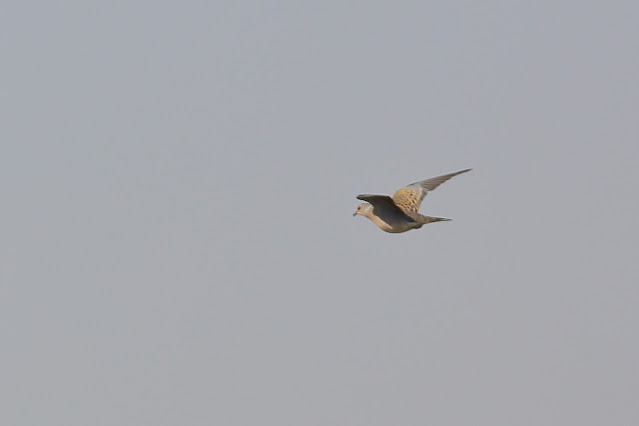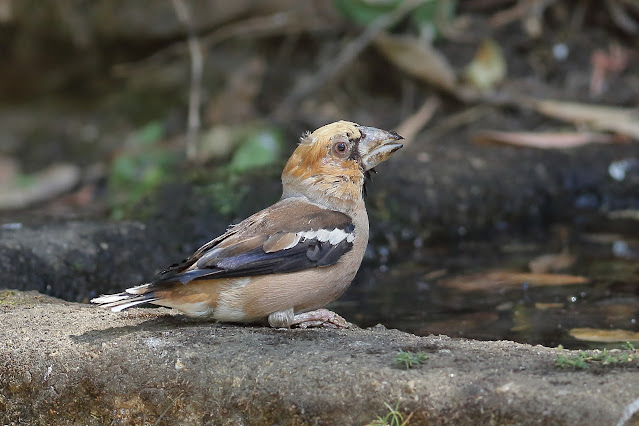Hola una vez más.
Hi again.
Hi again.
En el siguiente enlace podéis ver nuestros próximos viajes fotográficos y de observación de aves y mamíferos nacionales y al extranjero. Espero que os gusten y os animéis a venir conmigo. Una experiencia que nunca olvidareis.
In the following link you can see our next national and foreign Birds and Mammals photographic and observation trips. I hope you like them and I encourage you to come with me. An experience that you will not forget.
En esta vez os enseño lo que pude fotografiar en una excursión privada para ver aves esteparias y acuáticas a finales de julio. El tiempo fue muy caluroso lo que dificultó la observación de algunas de ellas. Además, una de las mejores lagunas de La Mancha estaba demasiado seca y las aves se concentraban en el medio de ella y demasiado lejos para sacarles fotografías.
This time I show you what I was able to photograph on a private trip to see Steppe Birds and Waterfowl at the end of July. The weather was very hot, which made it difficult to observe some of them. In addition, one of the best lagoons in La Mancha was too dry and Birds were concentrated in the middle of it and too far to take photographs.
La primera parte de la mañana nos dedicamos a localizar las esteparias. Pudimos observar las dos especies de gangas y también avutarda común (Otis
tarda) y sisón común (Tetrax
tetrax).como el de la foto. También vimos varios alcaraván común (Burhinus
oedicnemus) pero demasiado lejos para sacarles fotos.
The first part of the morning was dedicated to locating steppes Birds. We were able to observe the two species of sandgrouse and also Great Bustard and Little bustard like the one in the photo. We also saw several Stone Curlews but too far away to take photos.
Vimos varias Avutardas comunes (Otis tarda) en vuelo.
We saw several Great Bustards in flight.
Y otras estaban comiendo en los campos.
And others were eating in the fields.
Ya en el entorno de las lagunas, esta avoceta común (Recurvirostra
avosetta) estaba en un arroyo con dos jóvenes de este año.
Already in the surroundings of the lagoons, this Pied Avocet was in a stream with two juveniles of this year.
También vimos algunas tórtolas europeas (Streptopelia
turtur). En la foto un adulto.
We also saw some European
Turtle Dove. In the photo an adult.
Y en esta otra un joven.
And in this one a juvenile.
Tarro blanco (Tadorna
tadorna).
Common Shelduck.
Vimos una pareja de gangas ibéricas (Pterocles
alchata). Pero a mi se me fue el ojo solamente al macho.
We saw a pair of Pin-tailed
Sandgrouse. But my eye only went to the male.
Zamullín cuellinegro (Podiceps
nigricollis).
Black-necked
Grebe.
Había bastantes aviones zapadores (Riparia
riparia).
There were many Sand Martin.
La mayoría de los patos que se acercaban a los observatorios eran ejemplares jóvenes. En la foto un porrón europeo (Aythya
ferina).
Most of the ducks that approached the observatories were juveniles. In the photo a Common
Pochard.
Paloma torcaz (Columba
palumbus).
Common Wood
Pigeon.
Pato colorado (Netta
rufina). A este pollo se le empezaban a ver algunas plumas entre el plumón.
Red-crested
Pochard. This duckling began to show some feathers among the down.
Este estaba ya más crecido.
This one was a little bit older.
Joven de ánade azulón (Anas
platyrhynchos).
Mallard juvenile.
Joven de golondrina común (Hirundo
rustica).
Barn
Swallow juvenile.
Los bonitos y elegantes flamencos comunes (Phoenicopterus
ruber) se acercaron bastante a los observatorios.
The beautiful and graceful Greater Flamingos came quite close to the observatories.
Somormujo lavanco (Podiceps
cristatus).
Great
Crested Grebe.
Malvasía cabeciblanca (Oxyura
leucocephala).
White-headed
Duck.
Zampullín común (Tachybaptus
ruficollis).
Little
Grebe.
Me hizo mucha ilusión poder ver algunas cercetas pardillas (Marmaronetta
angustirostris).
I was very excited to see some Marbled Teals.
Cuando llegamos a la última laguna, me sorprendió ver que casi no tenía agua. El año pasado por estas mismas fechas tenía mucho más agua y había muchas más aves. De todos modos, me sorprendió ver que había muchos ánsares comunes (Anser anser) y también bastantes moritos comunes (Plegadis
falcinellus).
When we got to the last lagoon, I was surprised to see that it had almost no water. Last year around this same time it had much more water and there were many more birds. Anyway, I was surprised to see that there were many Greylag Geese and also quite a few Glossy Ibis.
Después nos fuimos en busca de cernícalos primilla (Falco naumanni). Cuando nos acercábamos al primillar, me sorprendió ver que de él salía un numeroso bando de chovas piquirrojas (Pyrrhocorax
pyrrhocorax).
Then we went in search of Lesser Kestrels. As we approached to ttheir breeding colony, I was surprised to see a large flock of Red-billed Choughs coming out of it.
El edificio que albergaba el primillar estaba siendo remodelado y convirtiéndose en un atentico primillar y no un edificio abandonado. De todos modos, al estar haciendo las las obras en época de reproducción, este año había muchos menos cernícalos primilla (Falco naumanni) que otros años. Espero que el año que viene regresen los cernícalos a este remodelado emplazamiento. En la foto un macho.
The building that housed the breeding colony was being remodeled and turned into a beter place for breeding porpuses than an abandoned building. In any case, as works were been done during reproductive period, this year there were much less Lesser Kestrels than in other years. I hope that next year Kestrels will return to this remodeled building. In the photo a male.
La única laguna que visitamos que tenía bastante agua era la de Veguilla en Alcázar de San Juan.
The only lagoon we visited that had enough water was Veguilla in Alcázar de San Juan.
Si queréis suscribiros a este blog de los viajes que hacemos pincha en el siguiente enlace: Suscribirse y haz clic en ¿ Quieres suscribirte a nuestro blog?
If you want to subscribe to this post about the trips we do, click on the following link: Susbcribe and click on: Do you want to subscribe to our blog?
Espero que os haya gustado y hasta pronto.
I hope you like it and see you soon.












































































































































